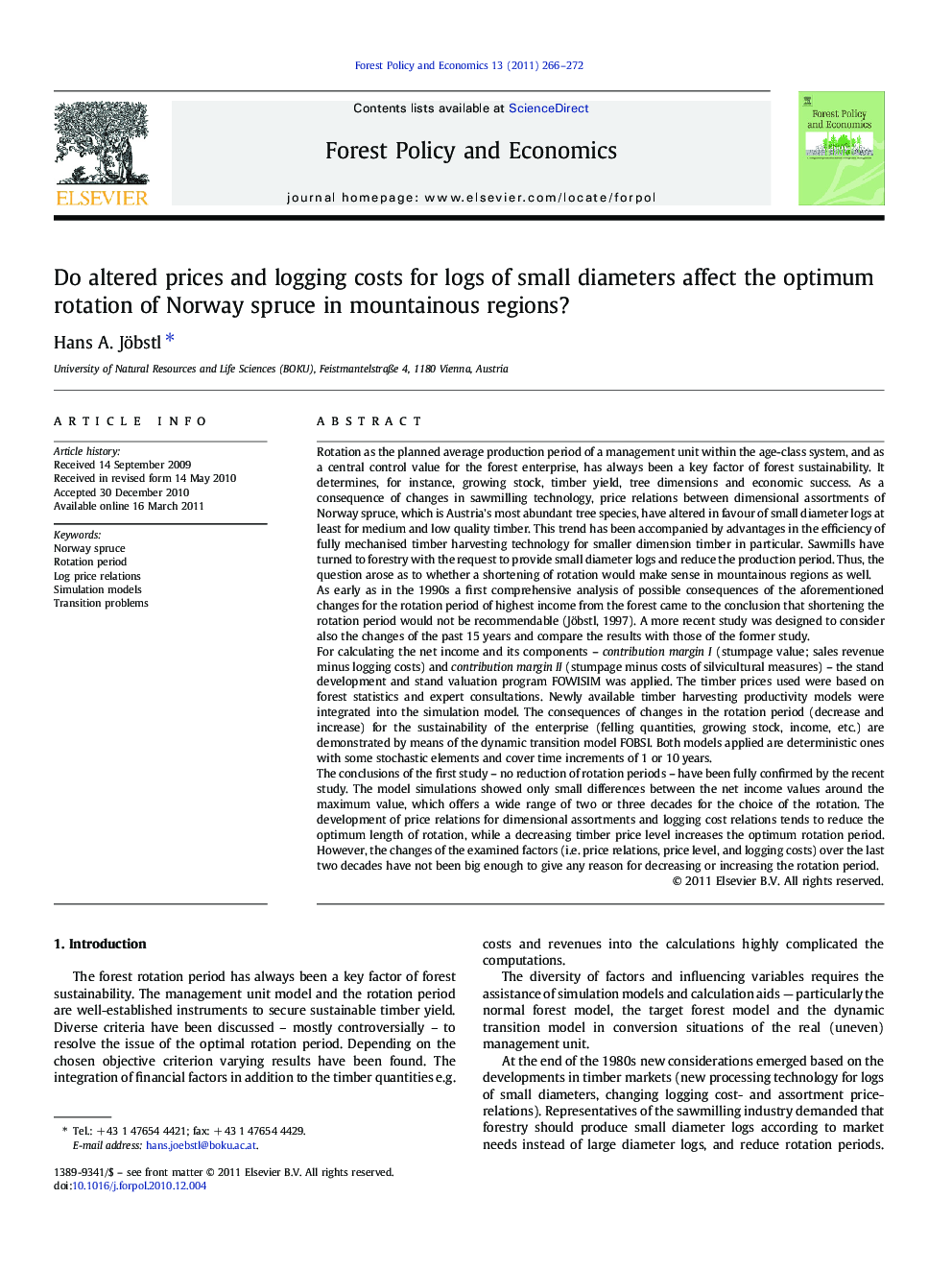| کد مقاله | کد نشریه | سال انتشار | مقاله انگلیسی | نسخه تمام متن |
|---|---|---|---|---|
| 91436 | 159800 | 2011 | 7 صفحه PDF | دانلود رایگان |

Rotation as the planned average production period of a management unit within the age-class system, and as a central control value for the forest enterprise, has always been a key factor of forest sustainability. It determines, for instance, growing stock, timber yield, tree dimensions and economic success. As a consequence of changes in sawmilling technology, price relations between dimensional assortments of Norway spruce, which is Austria's most abundant tree species, have altered in favour of small diameter logs at least for medium and low quality timber. This trend has been accompanied by advantages in the efficiency of fully mechanised timber harvesting technology for smaller dimension timber in particular. Sawmills have turned to forestry with the request to provide small diameter logs and reduce the production period. Thus, the question arose as to whether a shortening of rotation would make sense in mountainous regions as well.As early as in the 1990s a first comprehensive analysis of possible consequences of the aforementioned changes for the rotation period of highest income from the forest came to the conclusion that shortening the rotation period would not be recommendable (Jöbstl, 1997). A more recent study was designed to consider also the changes of the past 15 years and compare the results with those of the former study.For calculating the net income and its components – contribution margin I (stumpage value; sales revenue minus logging costs) and contribution margin II (stumpage minus costs of silvicultural measures) – the stand development and stand valuation program FOWISIM was applied. The timber prices used were based on forest statistics and expert consultations. Newly available timber harvesting productivity models were integrated into the simulation model. The consequences of changes in the rotation period (decrease and increase) for the sustainability of the enterprise (felling quantities, growing stock, income, etc.) are demonstrated by means of the dynamic transition model FOBSI. Both models applied are deterministic ones with some stochastic elements and cover time increments of 1 or 10 years.The conclusions of the first study – no reduction of rotation periods – have been fully confirmed by the recent study. The model simulations showed only small differences between the net income values around the maximum value, which offers a wide range of two or three decades for the choice of the rotation. The development of price relations for dimensional assortments and logging cost relations tends to reduce the optimum length of rotation, while a decreasing timber price level increases the optimum rotation period. However, the changes of the examined factors (i.e. price relations, price level, and logging costs) over the last two decades have not been big enough to give any reason for decreasing or increasing the rotation period.
Research Highlights
► Large versus small diameter logs production in mountain forestry is discussed.
► Determinants of net income and implications of production shifts are analyzed.
► Model studies prove that in mountain areas logging costs outweigh price changes.
► Established large diameter log production with high rotation periods is confirmed.
► Conversion scenarios and their medium and long term effects are illustrated.
Journal: Forest Policy and Economics - Volume 13, Issue 4, April 2011, Pages 266–272